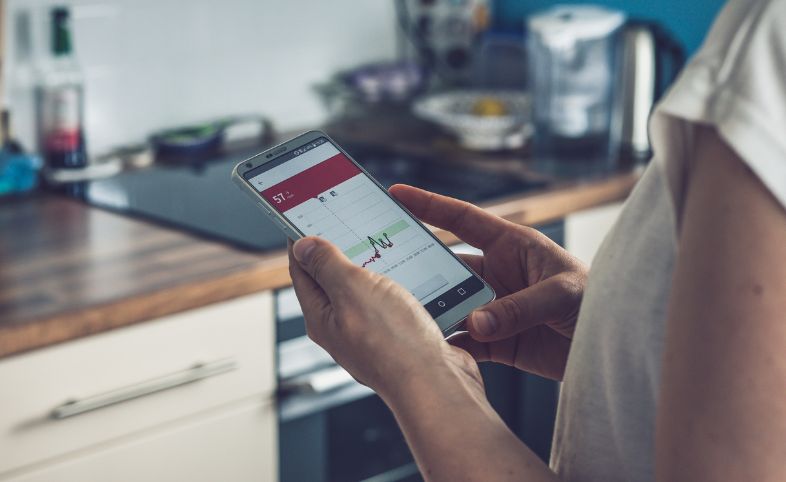The National Insights Prioritisation Programme (NIPP), a joint initiative of the Accelerated Access Collaborative, NHS England and the NIHR Applied Research Collaboration for the East of England, was designed to facilitate understanding of the impact of using remote monitoring (RM) technology in patient care across integrated care systems (ICSs). Beginning in August 2021, the NIPP fast-tracked the evaluation of RM technologies to help shape healthcare delivery following the pandemic. It encompassed a roll-out of RM across various clinical pathways in the East of England. The University of Hertfordshire and Health Innovation East subsequently spearheaded an evaluation of RM across four sites and provided NHS trusts with insights into the implementation and impact of RM.
An important element of the evaluation was a Lived Experience Advisory Panel (LEAP), which was made up of patients with direct experience of RM technology. One of the members of the panel was Ian McIlroy, a patient of the Northampton General Hospital (NGH) chest clinic. His experience illustrates the significant potential of remote monitoring and the positive impact of patient-centred solutions both on individual health outcomes and on health, care and community services.
Understanding the patient’s perspective
Ian, 64, has lived with asthma for 25 years and has experienced a significant deterioration in his condition over the last five years. Despite Ian’s adherence to a rigorous inhaler-based management plan, his asthma led to several severe exacerbations, necessitating repeated interventions. His journey with NGH marked a turning point in his treatment, characterised by meticulous care and innovative approaches to managing his condition.
The NGH team’s decision to use the Doccla asthma home monitoring system was a milestone in Ian’s health journey. The technology, comprising ways of measuring peak expiratory flow rate, temperature, oxygen saturation and pulse rate, not only captured key statistics but, coupled with an intuitive smartphone app for data uploading, was also ‘intuitive, easy to handle, simple to use and reliable’. The user-friendliness and portability of the RM system also meant that Ian could manage his condition more autonomously.
The data collected through remote monitoring played a crucial role in shaping Ian’s treatment pathway, facilitating his consideration for benralizumab monoclonal antibody therapy, a cutting-edge approach that would significantly reduce his reliance on steroids. ‘RM was instrumental in compiling a robust case for this new therapy, which has dramatically improved my quality of life,’ he says.
The remote monitoring system empowered Ian to recognise early signs of exacerbation and supported him in developing a habit of regular health monitoring.
Beyond individual care: wider implications for clinical decision making
Ian’s story goes beyond personal health improvement. It illuminates the broader potential of remote monitoring in health and care. Such technologies not only streamline data collection and increase patient involvement but also help to optimise clinical decisions. Equally, as Ian points out, the technologies also have a role in speeding up hospital discharges and supporting the integration of health and social care.
Advocating for inclusive technology
Ian and the other members of the LEAP emphasised the importance of ensuring that RM is a service accessible to people who may find it more difficult to participate, such as those for whom English is not a first language, people with a diagnosis of dementia or those who are digitally excluded. Not all services routinely collect information about patients that may help to tackle known health inequalities. This means that thought needs to be given to the way in which services identify and communicate with patients who may benefit from RM and also to the support they need to engage with technology. Further information on the findings of the NIPP on RM in the East of England and other initiatives across England can be found here.
Harnessing remote monitoring for enhanced healthcare efficiency and patient care
Ian’s engagement with remote health-monitoring technologies not only demonstrates the significant benefits of these tools in individual patient care but also underscores their broader utility for healthcare, including their impact on the backlog exacerbated by COVID-19.
RM offers a dual advantage: it empowers patients to manage their health conditions from the comfort of their homes while facilitating efficiencies in healthcare delivery – by monitoring physiological and behavioural issues, it helps reduce the necessity for hospital stays. Ian’s experiences also offer healthcare professionals and developers insight into the advantages of co-designing health-monitoring solutions. Cooperation across health, social care and community services is crucial in providing patients, particularly those transitioning from hospital to home-based care, with the holistic support they need.
The road ahead
“Patients benefit so much more than we anticipated. It’s not just about monitoring; they get a huge amount of education, feedback and reassurance from it and don’t re-present in acute settings any more.”
Lead RM Clinician
The NIPP recommends several strategies for healthcare professionals and NHS trusts to effectively integrate remote monitoring.
Key suggestions include improving data systems for enhanced data quality and sharing, understanding how remote monitoring integrates across different healthcare sectors (including secondary, primary, community, social care and the voluntary sector) and consistently incorporating patient and carer experiences in the evaluation and development of remote monitoring services.
The journey for RM will be marked by continuous learning, adaptation and a steadfast focus on making healthcare more accessible and equitable.
You might also like…

The NHS Insights Prioritisation Programme (NIPP) was designed to understand the impact of using remote monitoring (RM) technology, implemented in patient care, across Integrated Care Systems (ICS).
Share your idea
Do you have a great idea that could deliver meaningful change in the real world?
Get involved